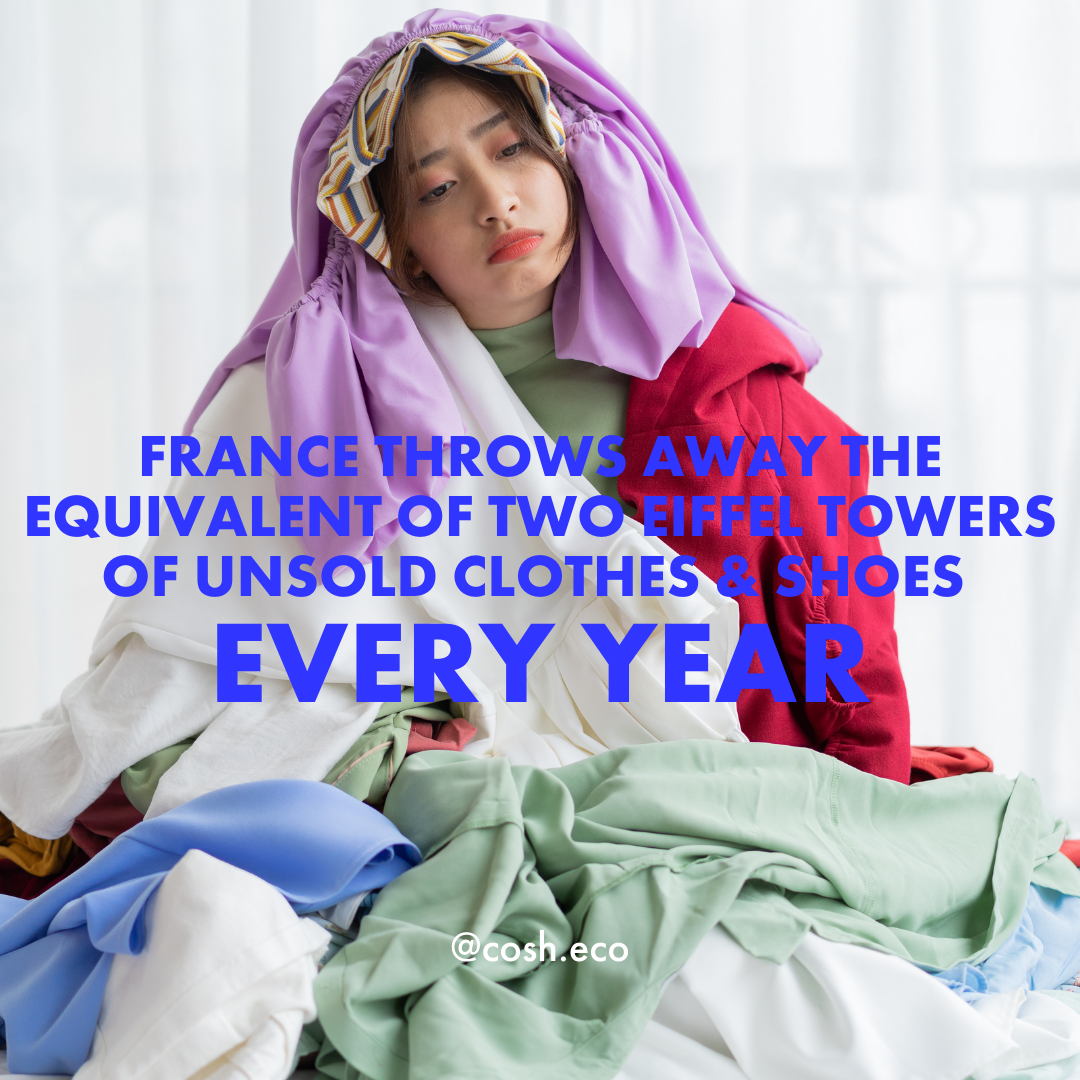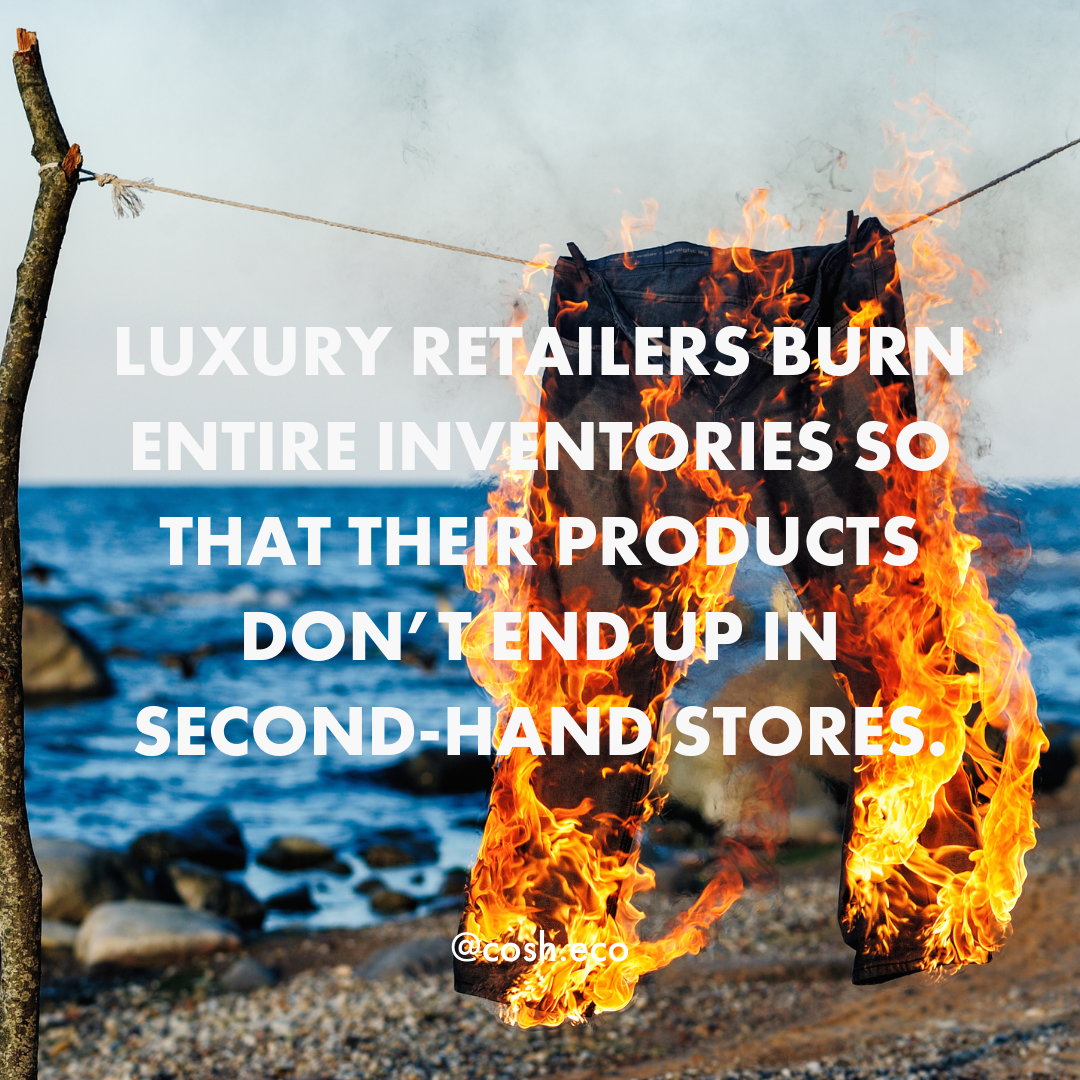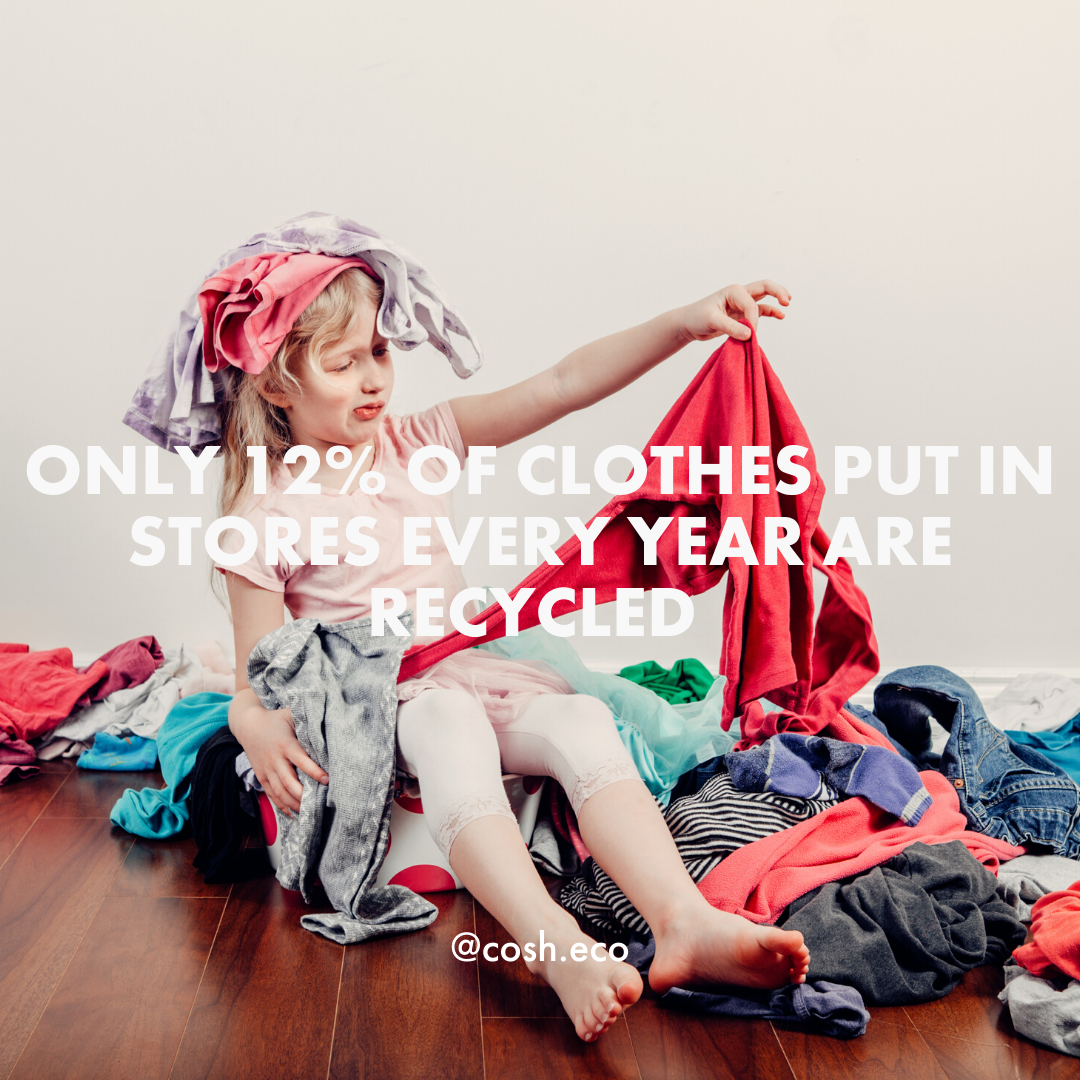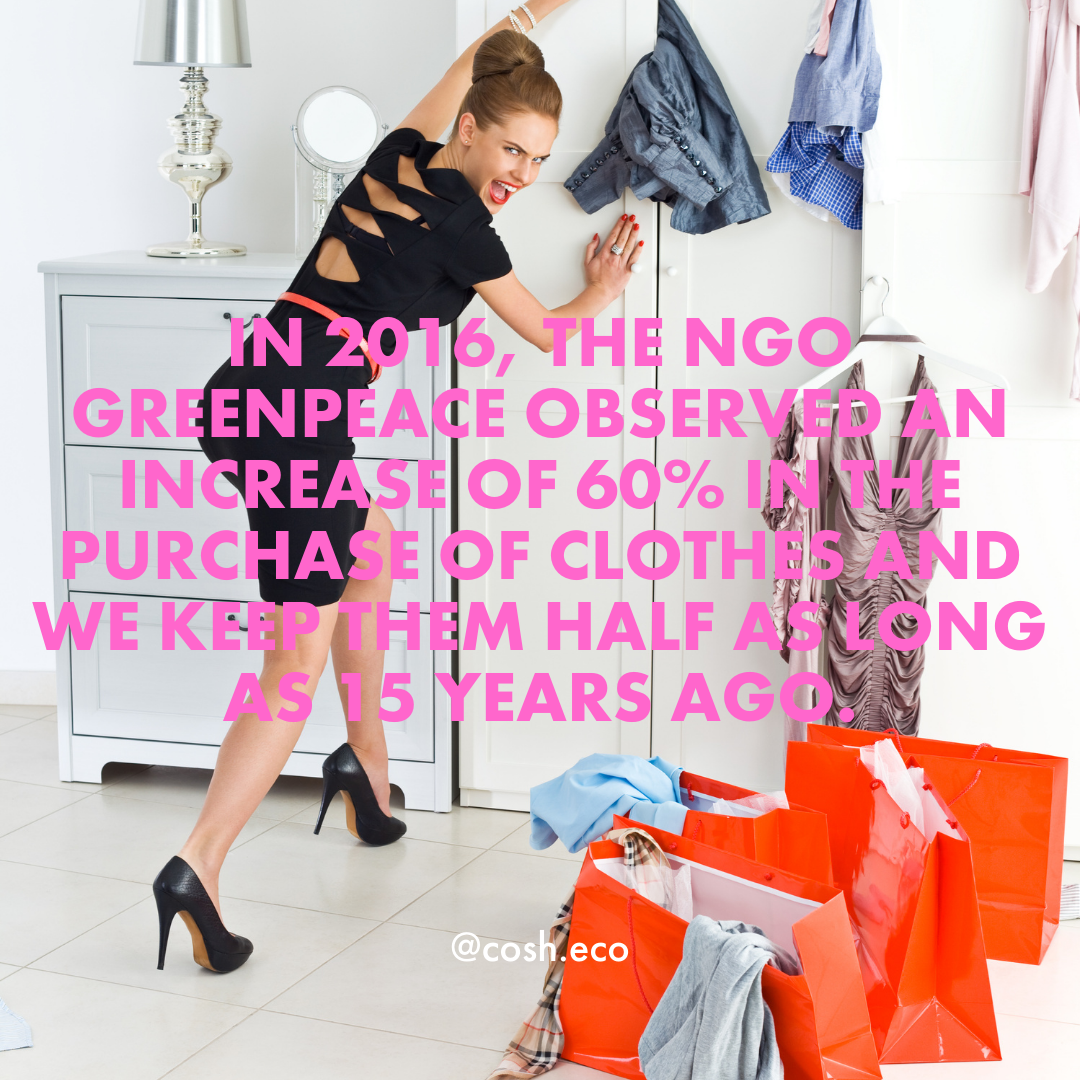
9 December 2025
Niki de Schryver from COSH!: Fast fashion harms circular goals
- Greenwashing
- Press
Our lifestyle generates a lot of waste. Lots of clothes and accessories will never be worn or purchased. This phenomenon is called “clothing waste” or “fashion waste”. These purchases eventually become environmentally harmful textile waste. How do retailers manage this huge flow of clothing? How can we avoid the accumulation of textile waste?

Sales are upon us and the Fashion Week just ended! But before rushing to the stores to refresh your wardrobe with the new trends, take a look at these figures:
40% of the clothes produced by brands will never be worn and 70% of the clothes currently in our closets aren’t being worn anymore
Nearly 4 million tons of new or used fabrics are thrown away every year in Europe according to the Emmaus association
France throws away the equivalent of two Eiffel Towers of unsold clothes and shoes every year, according to the French Minister of Ecological Transition, Brune Poirson
Only 12% of the 2.6 billion items of clothing put in stores each year in France are processed for recycling
And finally, more than 2 billion tons of municipal solid waste is generated in the world each year and this figure may reach 3.4 billion or more by 2050.
Fast fashion and luxury brands are the main perpetrators. Zara, for example, releases a new collection every 15 days, while we have enough clothes to last until 2050. The fast accumulation of clothes makes us throw away our old clothes more quickly and the most responsible among us put them in storage containers almost already full. Unfortunately, this situation leads to harmful environmental side-effects.

The scandals
From luxury to fast fast fashion: the textile and accessories industry produces an enormous amount of articles. If they are not sold or discounted, these articles end up in containers (which are heated and lit), or burned, or torn. Retailers burn entire inventories of clothing and accessories so that their products don’t end up in second-hand stores. In 2017, Burberry had destroyed more than $35 million worth of unsold clothing, accessories, and fragrances. So you won’t or will very rarely see their famous trench coats in second-hand stores. Hermes and likely other luxury brands use this process too. Luxury brands don’t want to see their prestigious products sold at a discount and renting warehouses becomes expensive over the years, that’s why they prefer to burn their collections.
Some fast fashion brands also use this practice. In 2017, H&M reportedly burned several tons of new clothes in Denmark: 60 million items or the equivalent of 12 tons of clothing. Multiple puff jackets, shirts, and sweaters from the brand Celio have also been found lacerated in Rouen during the winter. This practice is unfortunately commonplace in the industry.
The other way to sell off stocks is to offer discounts. In the past, brands used to sell off their stock during the winter and summer sales. Due to the intense production cycle of clothing today, it is difficult to sell off inventories. More and more promotions are presented to us, which is not ideal for the planet because the more clothes we buy the easier it is for us to throw them away. In 2016, the NGO Greenpeace observed an increase of 60% in the purchase of clothes noting we keep them half as long as 15 years ago.

The Anti-waste and circular economy law
In Europe, France is a forerunner. At the beginning of 2022, the Anti-Waste and Circular Economy Law (known as the AGEC Law) came into force. This law aims to reduce waste and its management.
It is divided into 5 main areas:
To move away from disposable plastic;
Better inform consumers;
Fight against waste and for unified reuse;
Act against programmed obsolescence;
Better production.
Concerning the textile industry, the law forces producers, importers, and distributors to “give, reuse or recycle their unsold products”. From now on, sanctions will apply to single-use plastic packaging. Your item will have to be repairable, compostable, or recyclable and the unsold goods will either have to be offered to associations or be recycled. Plastic filters will be added to washing machines to limit the release of microfibers into the ocean. Preventing 500k polyester & 700k acrylic microfibers from being released after every 6kg of laundry. The measure will come into effect on January 1, 2025. In addition, the production model will have to adapt to new priorities such as the circular economy, reduced consumption, preservation of natural resources, biodiversity, and climate.
France also launched the Extended Producer Responsibility (EPR) to extend the life of our clothes. This system is based on the “polluter pays” principle but relies on the will of companies. Companies must think about how their product will be disposed of, recycled, or repaired. France is currently the only country with EPR regulations for textiles. By combining the AGEC law and EPR, the organizations in charge of implementing these initiatives will have to distribute bonuses and fines in order to financially incentivize companies to reach their objectives.
To learn more about Extended Producer Responsibility, click here.

This law is a real step in the right direction, but there are still several issues. It only impacts the end of the supply chain, but given the figures mentioned above, we should focus on preventing such excessive production in the first place. Our way of consumption must change! Moreover, the implementation of the law remains unclear regarding its binding aspect. For the EPR, the choice is left to the industry, but can we still count on them? A binding framework applied throughout the supply chain and to all manufacturers and companies located in Europe would be more effective, to begin with. Recycling is highlighted but the majority of items produced by fast fashion are not recyclable or biodegradable. Indeed, since the 80s the industry has mixed several materials for profitability, which makes recycling difficult or impossible.
While waiting for a revolution in the textile industry, several alternatives are available to consumers.
First of all, consuming less, better and occasionally.
By 2030, the world consumption of clothing will be over 102 million tons of clothing: including more than 500 billion T‑shirts. How many white t‑shirts do you own right now?

Instead of searching for the perfect jeans or t‑shirt, opt for custom-made clothes with the possibility of readjustments if your body changes. This option allows for the growth of local businesses and allows you to buy locally. According to the French Agency for the Environment and Energy Management (ADEME), a pair of jeans travels up to 65,000 km from the cotton field to the store or 1.5 times around the world.
The fast-fashion brands produce clothes that are difficult to recycle and not biodegrade. For comfort, “durability” and profit, natural materials are mixed with those derived from oil. In short, when these clothes end up in nature, they produce the same effect as a plastic bag. Prioritize articles with only one material, preferably a natural one. Even if they are made of 100% polyester, recycling is still possible.
For the protection of the environment, it is possible to act upstream of manufacturing: this is called “eco-design”. Eco-design is defined as “the systematic integration of environmental aspects from the design and development of products”. It is therefore a way for companies to reduce the impact of their products or services at each stage.
When you want to go on a shopping spree, head for second-hand stores. It’s not a perfect solution but it’s a great alternative to the fast-fashion giants. Want to know more about the second-hand industry? Read our dossier here.
More and more designers are using upcycling for their collections. This practice is possible thanks to clothes donations and surplus fabrics offered by luxury brands. By choosing upcycling you will give a second life to your clothes.
Renting clothes
More and more clothing libraries and stores are offering clothing rentals. This technique allows you to sate your shopping cravings but it is also effective for special occasions.
Want to discover stores and brands that offer good alternatives? Check out our shopping guide for Belgium and the Netherlands

9 December 2025

9 December 2025

9 December 2025